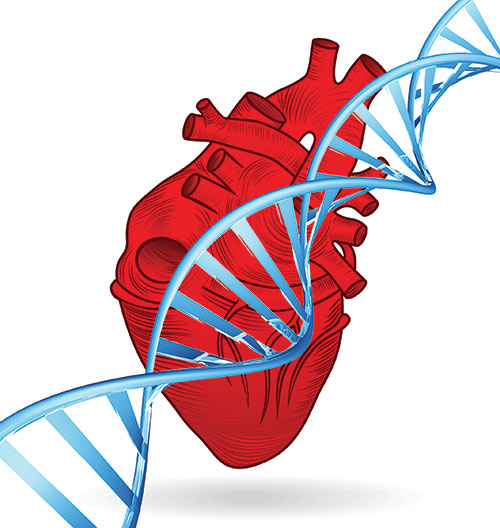
New European recommendations stress the value of cardiac genetic testing in athletes but also outline its limitations and the importance of counseling before and afterwards.
High-level exercise can lead to structural and electrical changes in the heart that can mimic inherited cardiac conditions, explain the researchers.
This ‘grey zone’ can make it difficult to distinguish an athlete’s heart from potentially dangerous conditions causing cardiac disease and separating the two requires the use of several diagnostic tools.
A newly published scientific statement in the European Journal of Preventive Cardiology offers a roadmap for the role of genetic testing, providing common clinical scenarios and advice to physicians, nurses and other professionals involved in athletes’ care.
“Genetic testing for potentially lethal variants is more accessible than ever before and this document focuses on which athletes should be tested and when,” explains co-author Michael Papadakis, PhD, of St George’s, University of London, U.K.
“Sportspeople should be counseled on the potential outcomes prior to genetic testing since it could mean exclusion or restricted play.”
Genetic testing has been transformed by next-generation sequencing techniques and may include sequencing known or suspect disease-linked genes, whole-exome sequencing that includes all coding regions of the genome, and whole-genome sequencing.
These tests can identify variants of concern in up to 70% of individuals depending on the disease, with children having a 50% chance of inheriting most cardiac conditions from their parents.
The results are not binary but offer a spectrum of the likelihood of disease, grouped into five classes according to guidelines from the American College of Medical Genetics and the Association of Molecular Pathologists.
Clinical evaluation can then determine whether a defibrillator or other preventive therapy is needed and advice for exercise and competitive-sport participation.
“Even if a genetic abnormality is found, recommendations on treatment and return to play usually depend on how severe the disease is clinically,” said Papadakis.
“Is it causing symptoms such as fainting? Is the heart excessively weak or thick? Can we see many irregularities of the heart rhythm… and do they get worse during exercise? If the answer is ‘yes’ to any of these questions then play is likely to be curtailed in some way.”
Genetic tests can also be useful in signaling specific disease subtypes in conditions such as long (L)QT syndrome and identifying the associated risk of arrhythmias, potential triggers and they can help to target medical therapies.
“For instance, sudden immersion in cold water is more likely to cause life-threatening arrhythmias in LQT type 1 rather than types 2 or 3, so one should be more cautious with swimmers who have the type 1 genetic subtype than runners,” elaborated Papadakis.
For most conditions, risk level and the ability to exercise are determined from physically observable characteristics, with the exception of arrhythmogenic cardiomyopathy.
In this case, athletes with the causal gene need to abstain from competitive sport as high-level exercise can lead them to develop disease earlier in life, heart failure, and life-threatening arrhythmias.
In such cases, genetic counseling can be particularly important.
“The athlete needs to know that if the test is positive that may signal the end of his or her career, even if there is no clinical evidence of disease,” said Papadakis.
“On the other hand, if genetic testing is refused the condition may get worse. Post-test counseling is critical given the potential psychosocial, financial and mental health implications, particularly if the athlete is excluded from play.”
For child athletes, genetic counseling in an expert pediatric center may be needed, with assistance from a child mental health specialist where necessary.











